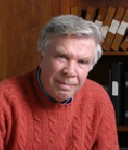 Almotamar.net Project Syndicate
Almotamar.net Project Syndicate - For many years, it was thought that all of our brain cells (neurons) are produced before birth, or exceptionally, up to one or two years after birth, but then the process supposedly stopped. From then on, most brain scientists believed, brain circuits could only be modified by altering the synapses, or contacts between existing cells. In this view, the total complement of cells, anatomically organized by function and forming major pathways, constituted the brain’s “hardware.” The detailed nature of the relation between cells, the modifiable synapses, was the software.
Starting in the 1960s, evidence suggested that new neurons might be added beyond this early period and even in adulthood. This evidence became compelling in the 1980s, based on observations made while studying parts of the songbird brain involved in the acquisition and production of learned song. The original observations were met with skepticism, but the birdsong data proved compelling.
How does one prove that a neuron was born at a particular time? Each cell in the body contains DNA, which is responsible for producing the proteins that are necessary for a cell’s functioning. Though all cells in the body have the same DNA, only a subset of the genes encoded by the DNA is expressed in each cell type, thus accounting for the difference between, say, a skin cell, a liver cell, and a brain cell.
When a cell is about to divide, as happens when tissue grows, the DNA in the mother cell has to be doubled, that is, new DNA is synthesized. It is possible to supply the cell with one of the building blocks of the new DNA, and to put a little radioactive tag on that building block. Later, scanning through the brain, every time we find a tagged cell we know that it was born at the time we furnished the DNA.
When we gave adult canaries the tagged DNA building block and then looked for tagged neurons that would have been born one or two days earlier, we found none. But if we waited longer – for example, 1-3 weeks, depending on part of brain – we found quite a few tagged neurons. This told us that the new neurons were not born by division of existing neurons, but were born elsewhere in the brain and went through a migratory stage during which they were not recognized as neurons. It took at least a week for the first new neurons to reach their destination and acquire the looks of an adult neuron.
We then learned how to identify the future neurons during their migratory journey. They were, at that stage, much smaller and had an elongated shape that allowed them to slip between other cells. It came as a great surprise when we discovered that the cells giving birth to the new neurons were a type called radial glia, which were thought not to occur in adulthood and were not known to give birth to neurons.
One of the paradoxes of this process is that in adult birds and mammals the total number of brain cells remains remarkably constant. The new neurons replace older ones of the same kind that die – a process of natural rejuvenation.
There are no hospitals in nature. The sudden loss of many brain cells as a result of strokes or injuries must have serious effects on an animal’s survival. It seems likely that the replacement of neurons in the adult brain did not evolve to make up losses due to illness or lesion, but as a process of constant renewal, a few cells being replaced every day.
This idea is so novel that it needs further elaboration. In the adult songbird brain, we can find at any moment many little migrating neurons ready to replace cells that have died. Only one of every three job seekers finds a job, but the overproduction is probably worthwhile, for it ensures that as a replaceable neuron dies, there will already be, in its vicinity, a younger one ready to take its place. As far as known, only a small fraction of all brain cells fall into the replaceable class; when other kinds of neurons die, they are not replaced.
We now know that the brain has the potential to grow new brain cells to replace others that have died. This potential could be used to repair damaged circuits. Laboratories around the world are trying to develop ways to bring this knowledge to clinical situations. The trick will be to induce the brain to produce and deliver to the correct destination any kind of neuron that might be needed, so that regardless of cell class, new cells of the required kind can replace others of the same type that have died. This goal is not near.
Fernando Nottebohm is professor and laboratory head at The Rockefeller University in New York.
Copyright: Project Syndicate, 2007.
www.project-syndicate.org
